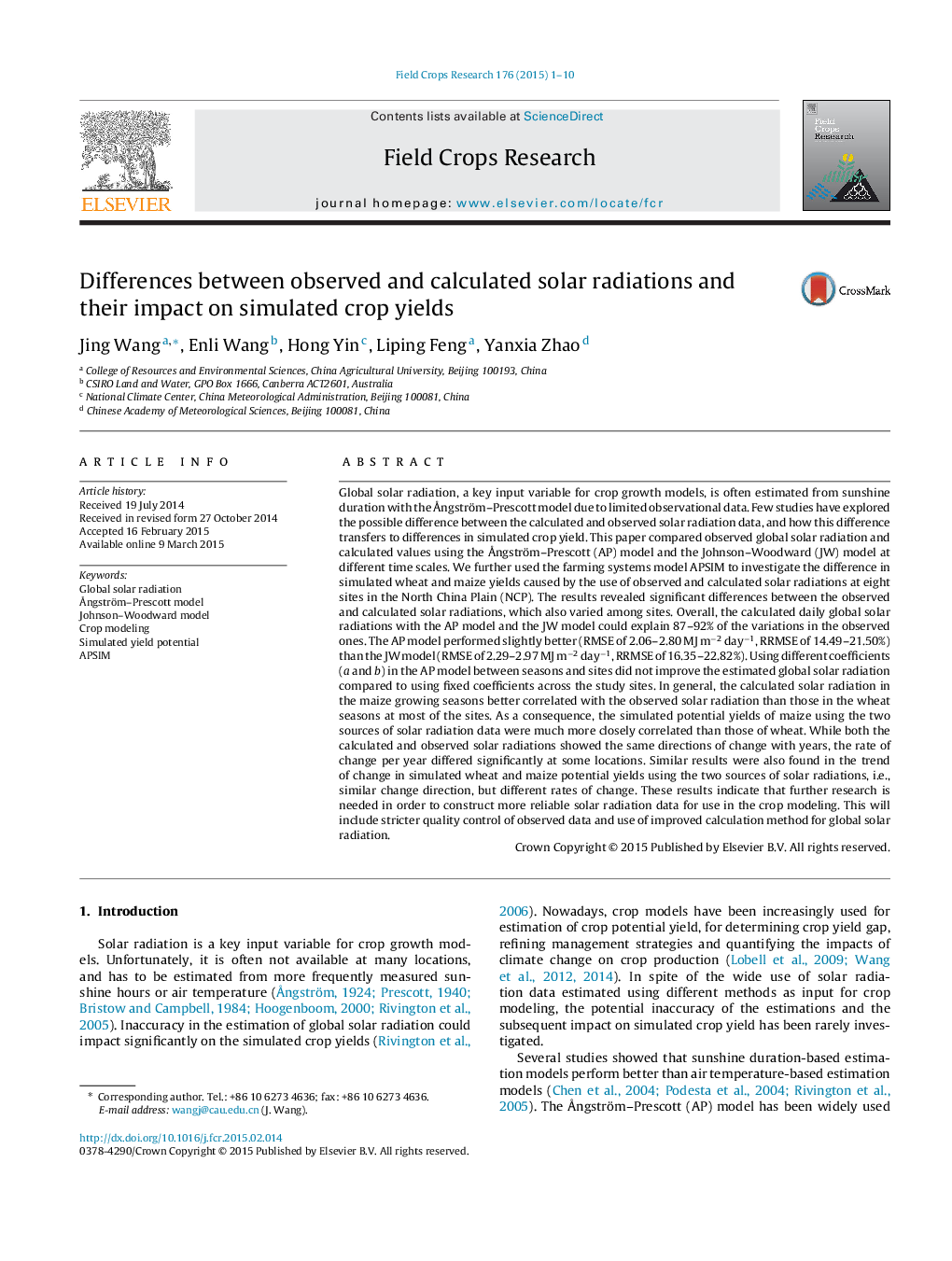| کد مقاله | کد نشریه | سال انتشار | مقاله انگلیسی | نسخه تمام متن |
|---|---|---|---|---|
| 4509901 | 1624687 | 2015 | 10 صفحه PDF | دانلود رایگان |
• Calculated radiation often used in crop modeling due to lack of measurements.
• Significant differences exist between measured and calculated radiations.
• Difference is smaller in maize season than wheat season in North China Plain.
• Measured and calculated radiations led to different simulated crop yield.
Global solar radiation, a key input variable for crop growth models, is often estimated from sunshine duration with the Ångström–Prescott model due to limited observational data. Few studies have explored the possible difference between the calculated and observed solar radiation data, and how this difference transfers to differences in simulated crop yield. This paper compared observed global solar radiation and calculated values using the Ångström–Prescott (AP) model and the Johnson–Woodward (JW) model at different time scales. We further used the farming systems model APSIM to investigate the difference in simulated wheat and maize yields caused by the use of observed and calculated solar radiations at eight sites in the North China Plain (NCP). The results revealed significant differences between the observed and calculated solar radiations, which also varied among sites. Overall, the calculated daily global solar radiations with the AP model and the JW model could explain 87–92% of the variations in the observed ones. The AP model performed slightly better (RMSE of 2.06–2.80 MJ m−2 day−1, RRMSE of 14.49–21.50%) than the JW model (RMSE of 2.29–2.97 MJ m−2 day−1, RRMSE of 16.35–22.82%). Using different coefficients (a and b) in the AP model between seasons and sites did not improve the estimated global solar radiation compared to using fixed coefficients across the study sites. In general, the calculated solar radiation in the maize growing seasons better correlated with the observed solar radiation than those in the wheat seasons at most of the sites. As a consequence, the simulated potential yields of maize using the two sources of solar radiation data were much more closely correlated than those of wheat. While both the calculated and observed solar radiations showed the same directions of change with years, the rate of change per year differed significantly at some locations. Similar results were also found in the trend of change in simulated wheat and maize potential yields using the two sources of solar radiations, i.e., similar change direction, but different rates of change. These results indicate that further research is needed in order to construct more reliable solar radiation data for use in the crop modeling. This will include stricter quality control of observed data and use of improved calculation method for global solar radiation.
Journal: Field Crops Research - Volume 176, May 2015, Pages 1–10
